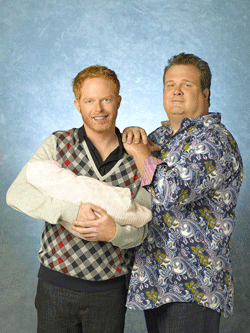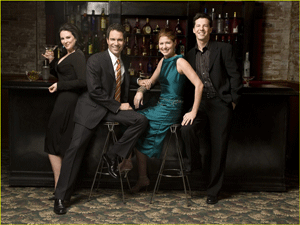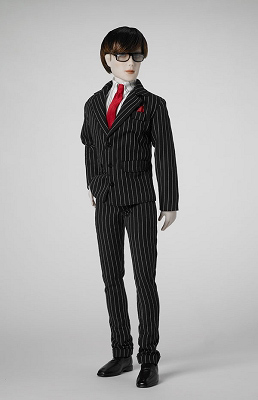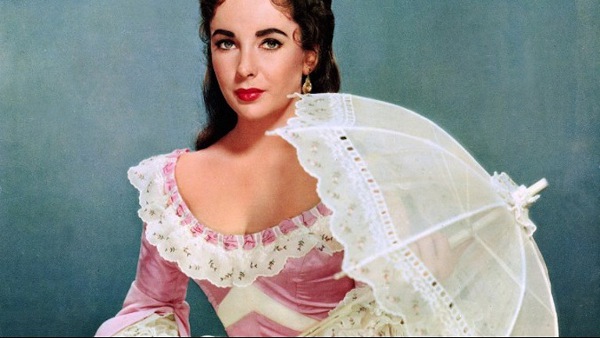Earlier this week, I read a press release from Robert Tonner (one of my most favorite doll artists in the world) and I said to myself, “This is either the bravest decision ever, or the most foolhardy.” Mr. Tonner unveiled the debut of a new snazzy doll, a handsome fellow named “Andy Mills.” The “dapper Dan” isn’t your typical plaything. No, in creating this newest arrival, Tonner swung open the closet door and issued Andy out into the bright spotlight of public scrutiny. You see, Andy Mills is gay.
Like all dolls of the last 20 years, Mills has a full curriculum vitae, a résumé of his accomplishments, a thriving career, a biography that makes him very nearly “real.” What is most revealing about the Mills entry is the timing of his “outing.”
Andy has emerged into the mainstream during a very gay-heavy news cycle. Even as I am typing this, the countdown is ticking away on the dismantling of the military “don’t ask/don’t tell” policy. And that is what is so fascinating to me about the Tonner declaration.
Robert certainly didn’t have to tell us about Andy’s sexual proclivities. None of us would have asked, and the doll certainly didn’t have to tell. However, in a landscape of broad stereotypes and cultural expectations, a “single, good-looking male events planner who lives in Manhattan” and has a successful career and lots of female friends sets off everyone’s “gaydar.” Even if the words weren’t officially placed into a press release, there are certain assumptions that could have been made about this character.
So why, then, is Andy Mills being touted as an openly gay male fashion doll? Well, I live in the “Garden State,” and one of our prior governors bowed out of office amid the swirl of scandal and unethical conduct. Rather than facing the loud drumbeat of political corruption, he preferred to dance off to the swaying beat of self-revelation. Yes, our onetime governor, Jim McGreevey, claimed he was stepping down due to fears his closeted, gay behavior was leaving him, his family and the state open to blackmail. He uttered the famous words “proud Gay American.”
 Though McGreevey swaddled himself in the rainbow flag to avoid censure and ongoing investigations, the term he used is actually quite inspirational. In many countries, being gay is a death sentence, or an invitation to be scorned and always viewed as “not quite right.” America is not one of those caste-system lands.
Though McGreevey swaddled himself in the rainbow flag to avoid censure and ongoing investigations, the term he used is actually quite inspirational. In many countries, being gay is a death sentence, or an invitation to be scorned and always viewed as “not quite right.” America is not one of those caste-system lands.
True, the United States hasn’t accepted the notion of marriage yet for gay men and women, but most polls show domestic partnerships are uniformly approved of and even championed. So, what is the fate for Mr. Mills? Is he going to linger alone as an emblem of a “proud Gay  American” or will he find a partner, someone else to share his dreams and his breathtaking apartment with?
American” or will he find a partner, someone else to share his dreams and his breathtaking apartment with?
This is where the Tonner decision becomes a tad tricky. Even network shows like “Will & Grace,” which were so pro-gay, hesitated before showing handsome lawyer Will in any kind of a loving, sexual partnership. There he was—an attractive, young, wealthy, smart and good-natured attorney living in New York City, and he couldn’t get a date. Will’s depiction as a wallflower should have relegated the program to the Sci-Fi Channel, but it most likely spun that way because NBC didn’t want to make his “gayness” too real. It was OK to have him a “little gay”: He dressed well, put up with Grace, was meticulous and loved his mom. It wasn’t until late in the run that viewers actually saw him in a romantic relationship, and even then, it often seemed more like two good buddies who got along really well.
Having a gay doll forces collectors to consider a whole bunch of facts about themselves and about how far (or how stalled) we’ve come as a culture. If Andy’s storyline allows him to get a domestic partner/husband, perhaps a baby and a dream house in the suburbs (very “Modern Family”), will that be a step forward or just a transgender swap of the “Barbie” backstory?
In 2010 is that the liberation that the gay community wants: an ordinary, domestic life of household drudgery that the Mattel “Mad Men” dolls are trying to escape from? Interesting point. Is basic normalcy something that can be craved and pined for if it’s been denied to a group for so long?
I have a personal history with Mr. Tonner, and I was lucky enough a decade ago to write his biography and overview of his dolls. At that time, I remember discussing with him whether or not we should include the details of his personal life. We both felt it was ridiculous to paint his life partner as simply his business partner, and the child they were raising as what? A permanent exchange student? It was silly to fabricate a construction of lies about something that was so ordinary: a pair of people who were building a business and a life together. From having to strategize whether or not to be truthful (a dicey decision due to feared backlash) to releasing an openly gay doll—wow, that’s a milestone in a chronicle of personal acceptance. And it’s happening during a time when bullying of gay teens is seizing the media’s attention. Perhaps the developments in Andy Mills’ fictional life can function as a life-saver for young boys who might be at sea with their own decisions and choices.
Unless we follow the Mills doll into the boudoir or into bars, we’ll never know what happens between the sheets. And why should we? We don’t know what Barbie and “Ken” were doing for all those years—and why did they break up, only to remain “good friends?” Barbie has had myriad of careers through the years: astronaut, teacher, veterinarian, fashion model, president. Why not add “beard” to the list? Could she have been Ken’s cover for three decades, and finally decided to let him go and find his own personal truth? Or, conversely, could Ken have been keeping Barbie’s own personal secrets? Barbie’s armoire must be enormous. I’m sure there’s plenty of room for her to hide in as well. Are there skeletons, decked out in indigo and purple, dangling in Miss Roberts’ wardrobe? That’s a riddle for us to ponder.
That’s the strange thing about attributing sex lives to your dolls. Minus anatomical correctness, these dolls are all genderless pieces of vinyl, plastic and resin. They get their allure from costuming, coiffing and cosmetics. And with the popularity of doll customizing, any Plain Jane doll can emerge as a fierce diva. There’s a little bit of drag potential every time we over-tease our doll’s hair and slip her into outrageous gowns and mile-high heels. (Let’s face it, what tell-all gossip could Gene Marshall share with us about her hedonistic years on the Hollywood backlot? Hmmmm.)
I wish the best for Andy Mills, the competent event planner residing in the Big Apple. I hope that he can be planning his own commitment ceremony in the next few collectible cycles. And if that’s the case, all of the dolls in our collections should attend and take part in this next, exciting chapter in doll history. Whether we want to admit it or not, the way we choose to play with our dolls reflects a whole lot on how we secretly want to conduct our own lives. Let’s hope we’re all honest with ourselves and with our collections, and collective consciousness.
Photo Captions
He’s certainly not “Raggedy Andy.” Tonner’s well-heeled and well-groomed Andy Mills (top) doll doesn’t have a secret. He’s openly gay and proud.
“Will & Grace” (bottom) opened the door with its weekly portrayal of a happy and healthy gay man, but Will was flying solo until nearly the series end. Contrast this to the new hit comedy “Modern Family,” (middle) which highlights the parenting skills (and failures) of a gay couple who are loving and devoted to one another.







